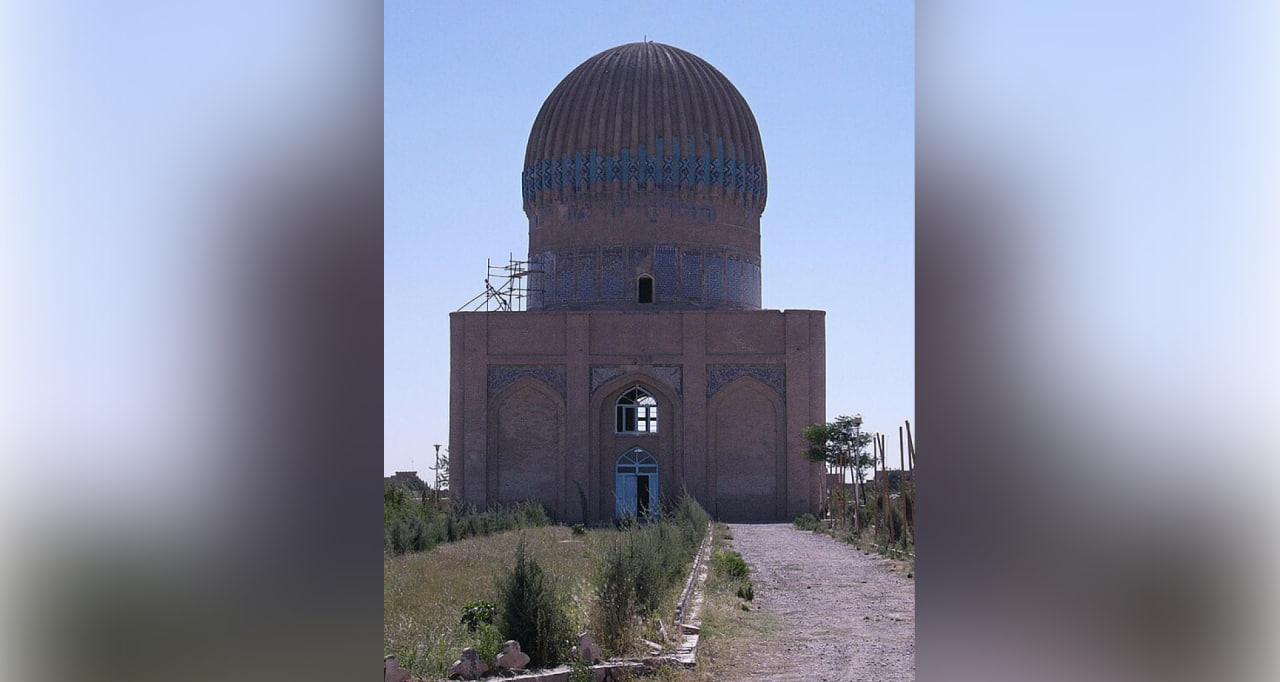Touching memory: the legacy of the mysterious princess in the heart of the Timurids revives in Uzbekistan
🔴 Light from the past
🔴 What is hidden behind the domes of the 15th century?

The priceless historical monument that embodies the architectural traditions of the Timurid era serves as a spiritual bridge between the past and the present. This monument, being one of the unique examples of Timurid architecture, has also witnessed many mysterious truths.
Among the monuments that occupy a special place in the exhibition of the Center of Islamic Civilization in Uzbekistan is the mausoleum of Gawharshad Begim in Herat. This mausoleum is not only a priceless historical monument that embodies the architectural traditions of the Timurid era but also serves as a spiritual bridge between the past and the present.
The mausoleum of Gawharshad Begim is located in the Musalla complex of the city of Herat, Afghanistan. Built in the 15th century, this structure served as a burial place for members of the Timurid dynasty. The mausoleum was commissioned by Gawharshad Begim, long before her death, and was completed in 1438 by architect Qawam al-Din Shirazi. Apart from Gawharshad Begim, her brother Amir Sufi Tarkhan, her son Muhammad Juki, her grandsons Sultan Muhammad and Ala al-Dawla, and her great-grandson Ibrahim were also buried here. Shahrukh Mirza was also briefly buried here before his remains were later moved to Gur-e Amir in Samarkand. This architectural monument is located next to the mausoleum of Alisher Navoi.
As part of the project on the mausoleums of our enlightened ancestors abroad for the exhibition of the Center of Islamic Civilization in Uzbekistan, a model of this mausoleum is also expected to be prepared.
Personality and place in history
Gawharshad Begim left a significant mark in history as one of the most influential and powerful women of the Timurid dynasty. Her name is associated with her attention to knowledge and enlightenment, as well as her contribution to urban development and architectural construction. Many madrasas, mosques, and social buildings in Samarkand, Herat, and other cities were built under her initiative and patronage. In this sense, the mausoleum is highly valued as a spiritual monument closely tied to her personal life and political activity.
Architectural features of the mausoleum
The mausoleum of Gawharshad Begim in Herat is considered one of the unique examples of Timurid architecture. Its architectural design features complex domes, intricate patterns, and surfaces decorated with blue tiles. This style reflects the decorative and spiritual spirit of the Timurid era. The mausoleum was created not only as a place for burial but also as a symbol of grandeur and spirituality.
Significance in the exhibition
The exhibition dedicated to the mausoleum of Gawharshad Begim at the Center of Islamic Civilization in Uzbekistan aims to highlight its architectural and cultural importance. Here, the model of the mausoleum, its images, information from historical sources, and academic research are presented. The exhibition allows visitors to not only appreciate the subtle details of architecture but also to feel the spiritual atmosphere of that era. Thus, the mausoleum evokes a vivid image of the development of Islamic civilization and the cultural renaissance of the Timurid period.
Spiritual and cultural heritage
The mausoleum of Gawharshad Begim has reached us not only as an architectural monument but also as a symbol of spiritual heritage. It embodies the ideas of Islamic knowledge, cultural development, and enlightenment. The presentation of this mausoleum in the exhibition serves to convey our rich historical heritage not only to the local population but also to the international community.
The mausoleum of Gawharshad Begim is a priceless historical monument that has earned a worthy place in the Center of Islamic Civilization. Its presence in the exhibition further strengthens the spiritual connection between the past and the present. This mausoleum is not only a part of the architectural heritage of the Timurid era but also an important element of the historical memory of the Uzbek people.
Durdona Rasulova
P/S: The article may be used by citing the official website of the Center.
Most read

Over 100 experts from more than 20 countries of the world are in Tashkent!

President of Serbia Aleksandar Vučić visited the Islamic Civilization Center in Uzbekistan

The Center for Islamic Civilization – a global platform leading towards enlightenment











